Economic and Social Changes: Facts, Trends, Forecast @volnc-esc-en
Статьи журнала - Economic and Social Changes: Facts, Trends, Forecast
Все статьи: 1728

Статья научная
The goal of the present article is to evaluate the trends and identify key problems in the socio-economic development of municipal entities and in the development of local self-government, and to identify ways to solve the most acute of them. We consider trends in the development of municipal entities in their relation with the processes of reforming local self-government; the analysis uses not only statistics, but also the results of a local self-government monitoring held in the Vologda Oblast since 2007 in the form of a questionnaire survey of heads of municipalities. This distinguishes our present work from similar works of other scholars and forms its scientific novelty. To achieve our goal we used such scientific methods as economic, statistical and comparative analysis, generalization, expert survey, and a monographic method. We have found out that the main problems that impede efficient management of development of municipal entities are as follows: flaws in the legislation regulating the development of local self-government; lack of own revenue sources and insufficient financial support from the state; low efficiency of interaction with public authorities; lack of complete and reliable information on the socio-economic development of the municipality; non-involvement of the local population; limited powers of local self-government bodies in the sphere of economic development of the territory...
Бесплатно

Current problems of cooperation between Russian and Belarusian enterprises: region’s view
Статья научная
Under the unfavorable geopolitical situation, strengthening bilateral cooperation between Russia and the Republic of Belarus is of particular relevance. Currently, Russia is Belarus’ key trade partner. Despite serious challenges, sanctions and restrictions, Russian and Belarusian enterprises continue developing cooperation in almost all sectors of the national economy and achieving results. According to the results of the first 11 months of 2022, the historically maximum volume of mutual turnover of goods and services - 45 billion U.S. dollars - has been achieved. Analytical data and expert assessments show that the current environment makes it possible to intensify bilateral cooperation between enterprises of the two countries and bring it to a new level. On the other hand, as experts note, the existing situation may become a source of problems that hinder the potential of such cooperation. This condition determines the topic relevance and the purpose of the work. The research aims to identify the barriers to cooperation between the enterprises of Russia and the Republic of Belarus and develop proposals for their elimination. In order to achieve this goal, we have developed a toolkit, which was used to conduct an expert survey (indepth interview method) of managers of enterprises of Russia’s region (the Vologda Oblast), cooperating with counterparties from the Republic of Belarus. We carried out the selection of the expert group by means of the documentary method. The heads of six enterprises of the region, whose activities correlate with the structure of the volume of foreign trade turnover between the Vologda Oblast and the Republic of Belarus, took part in the survey. Approbation of the developed toolkit allows identifying certain problems arising in the course of bilateral cooperation: the problem of value added tax refund in the framework of foreign trade operations, the presence of customs restrictions, including on special-purpose products, the negative effects of economic sanctions and others.
Бесплатно
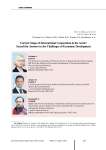
Статья научная
The transformations in the natural and socio-economic environment occurring in the Far North and the Arctic put forward the problem of regional sustainable development. This makes it necessary to address the task of finding strategic approaches to the management of the nonstandard Arctic region, considering the national interests of many states, including the Russian Federation, which dominates territorially in this region. Taking into account the size of the Arctic space and the extreme conditions of economic management, it seems relevant to comprehend the experience of international cooperation in the Arctic and analyze its use for socio-economic development in the entire Arctic region. The aim of the article is to analyze the current stage of international cooperation so as to find answers to the challenges of socio-economic development of the Arctic region. To achieve the goal, we have analyzed the state policy features of the Arctic states based on strategic planning, thus the northern states are able to adapt to the changing natural, socio-economic and geopolitical conditions. We considered approaches in the implementation of projects to develop mineral deposits on the continental shelf of the Arctic Ocean. With the support of international cooperation we give examples of nature management aimed at harmonization of economic interests of business entities and the need to preserve the environment quality in the Arctic. The scientific novelty consists in the critical analysis of the international cooperation features in the Arctic and its readiness to participate in overcoming the new challenges of the Arctic development. The practical relevance of the study lies in the fact that its findings can be used in the educational process in universities, as well as at the state level by executive and legislative authorities in the development and implementation of state policy in the Arctic zone of the Russian Federation, considering the features of international cooperation.
Бесплатно
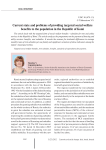
Статья научная
The article deals with the targeted form of social welfare benefits-subsidies for rent and utility services in the Republic of Komi. The article analyzes the programmes on the payment of housing and utility services: benefits, rent subsidies. It reveals the reasons for territorial differences in average monthly rates of rent subsidies per one family and significant variations of these indicators among the region’s municipal entities.
Бесплатно
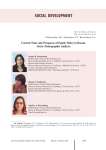
Current state and prospects of family policy in Russia: socio-demographic analysis
Статья научная
The goal of the work is to analyze the measures and expected results of the state family policy, including the activities of the national project “Demography” (2018), affecting the interests of the family, which allows us to determine the prospects of family policy. The article is based on the analysis of state documents on the strategy of demographic and family policy, official statistics, population censuses and sample surveys of Rosstat. We identify the effectiveness of family policy measures taking into account the differentiation of socio-demographic development of regions. To do this, we use methods of descriptive statistics and multidimensional data analysis - dispersion and cluster analysis. The cluster analysis makes it possible to form typological groups of regions depending on the dynamics of fertility, poverty level and the development of the preschool care system - the most important indicators characterizing the implementation of family policy strategy. Economic support measures, the effectiveness of which has been proven in a number of studies conducted in countries around the world, are very important for Russian families. However, the impact of these measures has its own specific features in connection with the differentiation of economic development of regions, opportunities for the development of social infrastructure, and maintenance of a decent standard of living for families with children; it is important to take all this into account in the development of family policy. The analysis of the effectiveness of family policy suggests the need to change the structure of implemented measures. Family policy should be long-term and systemic; it should be aimed at creating conditions that increase the independence of the family in modern society and economic relations. Often, in the course of formation of a strategy for activities in the field of family policy, there is no clear link between the goals of activities and indicators of its achievement. Complex issues that need to be addressed in the interests of the family (for example, providing opportunities for parents to combine family and professional roles) and that need to unite the efforts of various actors, including employers, remain outside the focus of family policy. The intersection of activities and expected results does not allow us to assess the effectiveness of individual strategic documents in the field of family policy.
Бесплатно
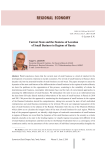
Current state and the features of location of small business in regions of Russia
Статья научная
World experience shows that the current state of small business is a kind of catalyst for the development of economic relations in market economies. The revival of small business in Russia is three decades old, but the potential benefits of small business are still weak. The paper attempts to assess the dynamics of the state and features of the differentiation of small business in the regions of modern Russia; we show the problems in the organization of this process, consisting in the variability of criteria for determining small business, incomplete information base and the lack of conventional approaches to assessing the differentiation of small business. We substantiate the need to use as an information base the data from full-scale federal statistical observations of the state of small business in Russia in 2010 and 2015. We prove that the approach to monitoring the development of small business in the regions of the Russian Federation should be comprehensive, taking into account the state of both individual entrepreneurs and small business enterprises in the territory...
Бесплатно
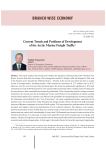
Current trends and problems of development of the arctic marine freight traffic
Статья научная
The article analyzes the trends and evaluates the prospects of functioning of the Northern Sea Route. It shows that after the change of its management model its freight traffic has dropped 4-fold, and in the Eastern sector (outside the Vilkitsky Strait) - 40-fold. In the recent years there has been a certain revival of transportation, including transit, which reached its maximum of 1.27 million tons in 2012. However, over the next two years they declined again; the drop was particularly significant in 2014 and amounted to a total of 240 thousand tons. The main problem is that this rather complex system is influenced by many factors, often contradictory and poorly predictable. Thus, the growing need for energy resources determines the overall need for developing the Arctic shelf. However, the possibility of climate cooling and the deterioration of ice situation can influence the possibility of transporting these resources. Besides, the Ukrainian crisis followed by the “war of sanctions” will cause a significant decline, especially in the medium term, the attractiveness of the European oil and gas market, which will cause the shift of strategic interests of Russian companies to the Asia-Pacific region...
Бесплатно

Статья научная
The article is based on the results of the author’s empirical research exploring the characteristics of the traditional nature management of indigenous peoples of Siberia. The article proposes the mechanisms of implementing the potential of traditional nature management and provides recommendations for enhancing the efficiency of this type of economic activity in the case of the Republic of Khakassia.
Бесплатно
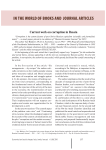
Current work on corruption in Russia
Статья научная
“Corruption is the system feature of post-Soviet Russian capitalism (scientific and journalistic notes)” - so much paper, placed in two editions of “Russian Economic Journal” for 20111. The author Yuri Boldyrev, Ph.D. in Economics, was in 1992 - 1993 Head of Control Department of the Presidential Administration, in 1993 - 1995 - member of the Council of Federation in 1995 - 2001 worked as deputy chairman of the Accounting Chamber. He is currently a columnist, “Literary Gazette” and the online newspaper«STOLETIE.RU». At the beginning of the work stated that it specifically argued very “pregnant” for the authorities and society thesis, anyway appearing in all the texts on contemporary Russian author. To solve this problem, in our opinion, the author has succeeded, which greatly facilitated the careful structuring of the article.
Бесплатно
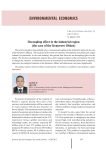
Decoupling effect in the industrial region (the case of the Kemerovo oblast)
Статья научная
The article considers the possibility of eco-economic decoupling in the industrial region (in the case of the Kemerovo Oblast). The analysis of the trends of economic development and production output volumes (in particular, in the coal industry) has proved that there are no decoupling effects in the region. The increase in production volumes has a direct negative impact on the environment. In order to change the situation, a substantial increase of investment in environmental protection is required, otherwise the ecological situation in the Kemerovo Oblast will deteriorate even more significantly.
Бесплатно
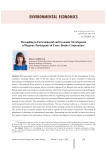
Статья научная
Moving towards “green” economy is currently a priority direction for the development of many countries, including Russia. One of the key aspects of the concept of green economy is achieving decoupling or misalignment of economic growth rates, resource consumption and negative environmental impact. The purpose of the article is to analyze the decoupling of negative environmental impact and resource consumption in economic activity in border regions of the Russian East and the entities of the Baikal region with cross-border economic relations with China. The research novelty lies in identifying the possible impact of cross-border position on environmental and economic development of the areas under review. Long-term experience of cooperation with the neighboring state demonstrates that prospects are followed by environmental problems since the economy of Siberian and Far Eastern regions is consistently focused on raw materials. The decoupling coefficient is calculated to identify the misalignment between economic growth rates and environmental pollution...
Бесплатно
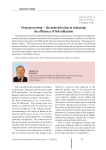
Deep processing - the main direction in enhancing the efficiency of fish utilization
Статья научная
The article proves that the modern level of processing of catches does not correspond to the objectives of marine fishing development contained in the Concept for the development of fishery in the Russian Federation for the period until 2020 and the Russian Federation State Programme “Development of fishery complex”. The article proves that to achieve the targets set out in the documents, the following measures should be carried out: the development of coastal fishing, the introduction of innovation technologies and equipment at coastal enterprises, the creation of integrated enterprises for production and processing of aquatic organisms, the enhancement of export efficiency, the promotion of unloading fish products onto Russia’s shores.
Бесплатно
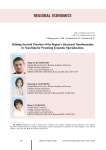
Статья научная
Global crises and foreign trade restrictions imposed on the Russian economy slow down its growth, affecting export-oriented regions to a great extent. Retaliatory economic measures, including those aimed to promote structural transformation of the economy, require its key directions to be defined. We attempt to determine priorities of the structural transformation of the Vologda Oblast economy by searching for promising types of economic activity. For this purpose, we study theoretical foundations of the search for priorities of sectoral development, elaborate and test a methodological approach to the search for promising branches of regional economic specialization, and identify areas of development for potential growth points. Using the materials of the Vologda Oblast, we make a list of activities whose development is promising from the point of view of long-term economic growth and identify potential opportunities for their introduction into the region’s economy. Scientific novelty of our work consists in the development and testing of our own tools for finding priorities for the structural transformation of the regional economy based on identifying promising economic specializations. The information base includes works of Russian and foreign researchers in the field of industrial and spatial development, data from state statistics, the Federal Institute of Industrial Property, scientific electronic library eLIBRARY. ru and regional input-output tables for the Vologda Oblast. The findings of the work can be used in the management of the region’s sectoral and spatial development and in research on the issues under consideration.
Бесплатно
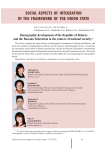
Статья научная
The article considers the main features of demographic development in Russia and Belarus, and shows the similarity of demographic problems and the presence of demographic threats. It examines the state policy in the sphere of human reproduction, and for the Russian Federation it substantiates the necessity of influencing the demographic processes from the viewpoint of national security. The article proves that the Union State countries should unite their efforts for overcoming negative demographic trends.
Бесплатно

Demographic development resources: on the unification of concepts in demographic research
Статья научная
The article attempts to distinguish a variety of related and consonant fundamental demographic terms, including: demographic development, demographic policy, demographic development (policy) tools, demographic development (policy) mechanism, demographic potential, demographic resilience. We also focus on the synthesis of a new concept - demographic development resources. To this end, we make an overview of current demographic research by Russian and foreign authors, consider their definitions of the above terms, and identify common and contradictory features of the concepts. We make an attempt to critically comprehend and generalize disparate approaches in order to systematize and unify the terminological framework of demographic research. During the analysis, we discover an entity that is invisibly present in the terminological framework of demographic development and demographic policy, but is not clearly defined. In order to introduce the appropriate term, we compare the interpretations ofthe terms “source”, “resource” and “potential”. As a result, we choose “demographic development resource” as the most accurate term for this phenomenon. Having systematized disparate approaches and clarified the meaning of individual components, we propose a definition for the term “demographic development resource” - it is a set of available tangible and intangible assets that can be used to manage demographic and migration processes. The identified concept, its term and the definition we propose should form the basis for research in a new scientific direction. In the future, it is necessary to typologize demographic development resources, identify and calculate their amount in Russia, assess their sufficiency, find the tools to influence individual resources, investigate the necessary and sufficient amounts of resources, as well as design a mechanism for achieving and maintaining their required amount, using the example of Russia.
Бесплатно

Demographic dividends: formation and use in the CIS and the Baltic countries
Статья научная
The article investigates one of the most pressing problems of the modern world - demographic aging and its impact on demographic security in the CIS. Changes in the age structure are happening on a global scale, and show increasing dynamics. At the same time, demographic aging has significant regional differences. The purpose of the study is to identify general trends, regional differences in population aging in the post-Soviet countries, the formation and use of demographic dividends. When analyzing the second demographic dividend, we propose to apply the term “resource potential of the older generation” that largely determines the capabilities of the aging population. We use the following methods: logical analysis, synthesis, generalization, induction and deduction, a systems approach to the analysis of demographic phenomena, calculations of demographic coefficients used in assessing the age structure, its dynamics and the formation of demographic dividends. The information base of the study includes data of the current accounting of demographic events presented by the Statistical Committee of the CIS, materials of Eurostat, the UN, domestic and foreign scientific publications, as well as materials of own research on the topic of the article. The main results of the work confirm the conclusion that the post-Soviet countries have significant differences in the age structure of their population and the intensity of demographic aging. We determine that the acceleration of the aging process was a general trend in most of them. This brings to the fore the problems associated with the need to form and effectively use the second demographic dividend, which will promote economic welfare of the countries.
Бесплатно
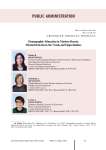
Demographic education in modern Russia: mismatch between the needs and opportunities
Статья научная
Negative trends in major demographic processes, aggravated by the impact of the COVID-19 pandemic, require not only an active demographic policy, but also thoughtful and well-grounded management decisions. This raises the requirements for the qualifications of employees in the field of science, education and management personnel in terms of their understanding of complex and multifactor demographic processes. Consequently, the need for training and retraining of demographers is also increasing. The purpose of the work is to assess the current state of demographic education in Russia and the possibilities of its development. The article presents an overview of foreign and national educational and scientific practice in the field of demographic education. We find that the “Demography” field is included in the enlarged group “3. Social sciences, business and law”; therefore, most educational institutions implement educational programs in the “Sociology” field; more often these are master’s degree programs. Scientific institutions focus on collaborating with educational institutions and pursue an educational and scientific trajectory (for example, the USA); they can also work autonomously by responding to the needs of the state and society (France, Germany). We also review Russian practice of implementing the educational process under the program “Demography”. We find out that only three universities conduct educational activities under this program. However, the scientific and educational potential for training demographers, taking into account “non-core” universities and academic research organizations, is available in the capital and in the regions. Nevertheless, the presence of laboratories specializing in demographic research proves the relevance of demographic knowledge in various regions of Russia. The analysis of departments’ teaching staff confirms their high educational and scientific potential. An overview of the work of scientific institutions and departments at universities indicates that vigorous scientific and research activity in the “Demography” field is being conducted in Russia. The analysis shows that in modern Russia, the issues of standardization of this area of work and education have not yet been fully worked out. We substantiate a system of successive stages for development of an educational standard in the “Demography” field and approval of the “Demographer” professional standard.
Бесплатно
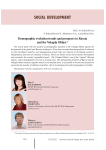
Demographic evolution trends and prospects in Russia and the Vologda oblast
Статья научная
The article deals with the analysis of demographic situation in the Vologda Oblast against the background of the global and Russian tendencies. It has been revealed that depopulation is observed in most developed countries, and depopulation growth rates are reduced in developing countries. Depopulation processes are retained in Russia, which can hinder social and economic development and contradict the country’s geopolitical goals. The Vologda Oblast is one of the “typical” Russian regions, where demographics are close to average ones. The demographic prospects of Russia and the Vologda Oblast indicate negative trends in the medium term. It is possible to reverse the situation by increasing the number of children in families, that is by changing the model of population’s fertility.
Бесплатно
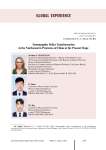
Demographic policy transformation in the northeastern provinces of China at the present stage
Статья научная
The Northeastern provinces of China are strategic territories from a geopolitical point of view; this fact determines the importance and relevance of studying their characteristic fertility trends and family planning directions. The demographic processes taking place here correspond to the general trends in China, but most indicators are lower than in other areas. The main objective of the study is to identify the features of demographic processes and directions of demographic policy implementation in the Northeastern provinces of China (Liaoning, Jilin, Heilongjiang) in the 21st century. The study is based on the analysis of the results of the National Population Census of the Republic of China (2000, 2010 and 2020) and legal documents regulating the policy of fertility and family planning. We show that the Northeastern provinces have a maximum proportion of families with one child, and the proportion of families with two children is two times lower than the average in China. The number of women of fertile age has decreased by a third, and the average age of women who have entered into their first marriage is increasing. We reveal that after the liberalization of the two-child policy in China, the family planning system includes previously used measures to support the elderly and families with one child, as well as new methods of birth support. Despite the formation of a unified national model of fertility support, the differences at the provincial level primarily relate to the remuneration and social security system of the population. Longer periods of maternity leave have been defined for the Northeastern provinces, and additional payments for the birth of children in border regions have been introduced.
Бесплатно
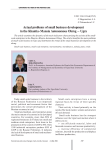
Demographic problems of the republic of Belarus and their solutions
Статья научная
Last year the realization term of the National Program of demographic security of the Republic of Belarus for 2007-2010 was over. The author of the article analyzes the implementation of the program paper from the angle of some certain indices. Some current demographic problems of the country are also considered, short-term and long-term perspectives are estimated. The author suggests some ways for further protection of demographic security of the Republic of Belarus.
Бесплатно

